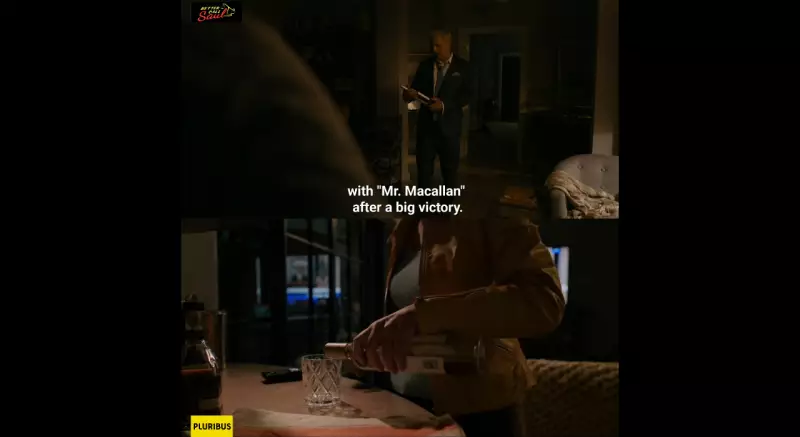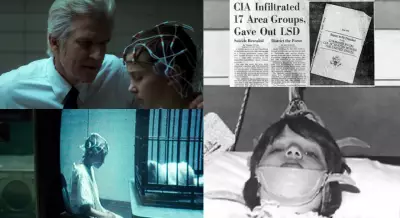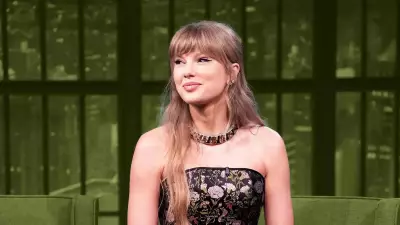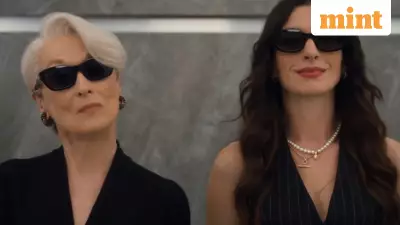
Vince Gilligan, the mastermind behind Breaking Bad, has returned with a gripping new science fiction drama called Pluribus that immediately captures audience attention with its intense opening episodes. The series introduces viewers to a world where humanity's individuality vanishes within minutes due to an extraterrestrial catastrophe.
A World Without Individuality
The storyline begins with scientists detecting a mysterious signal from deep space containing an RNA recipe. Months later, a laboratory accident triggers an unstoppable chain reaction where people twitch, collapse, and rise with their minds completely overwritten by an alien consciousness. This new collective intelligence appears bright, serene, and completely unified in purpose.
Carol Sturka, portrayed by Better Call Saul veteran Rhea Seehorn, emerges as one of only twelve people worldwide who retain their original identities. The character experiences profound personal tragedy when her partner Helen dies during the chaotic events, leaving Carol devastated and angry in a world that constantly insists it has become happier than ever before.
Every individual she encounters—doctors, neighbors, strangers—repeats the same unsettling reassurance: "We just want to help." This creates an atmosphere dramatically different from Walter White's gradual moral decline or Jimmy McGill's transformation into Saul Goodman in Gilligan's previous works.
The Albuquerque Connection and Easter Eggs
Despite Gilligan's clear statements that Pluribus exists outside the Breaking Bad universe, several carefully placed Easter eggs have sparked intense fan speculation about potential connections between the shows.
In the premiere episode titled "We is Us," Carol pours herself a glass of Macallan whiskey, which immediately resonates with Breaking Bad enthusiasts as Howard Hamlin's signature drink in Better Call Saul. This particular whiskey brand featured prominently in the scenes leading to Howard's shocking murder by Lalo Salamanca.
The series returns to Albuquerque, the sun-bleached landscape that became iconic through Gilligan's previous storytelling. However, instead of meth labs and strip-mall law offices, viewers encounter empty streets populated by eerily cheerful hive-minds.
Episode two delivers what might be the most significant nod to Breaking Bad lore when Carol boards an airplane with "Wayfarer" visibly stitched into the seat fabric. This fictional airline played a crucial role in one of Breaking Bad's most haunting episodes, "ABQ," which featured a devastating mid-air collision.
Why The Universes Remain Separate
Despite these deliberate references, Gilligan maintains that there is no narrative overlap between the worlds of Pluribus and Breaking Bad. No characters cross over between the series, timelines don't align, and the story contains no suggestions of a hidden multiverse connection.
The Easter eggs function more as emotional texture than actual clues. Gilligan leverages audience familiarity with his previous work, using elements like Macallan whiskey, the Wayfarer logo, and Albuquerque's distinctive visual palette to trigger memories of cartel schemes, moral unraveling, and catastrophic consequences.
In Pluribus, these familiar signals get rewired to point toward something entirely different—a world where enforced collective happiness replaces individual danger, and where smiling masses prove more unsettling than any traditional villain Gilligan has previously created.
The choice to set the series in Albuquerque originated from practical considerations during Breaking Bad's development, when Sony pushed for New Mexico over Southern California due to superior tax incentives. The location eventually became integral to Gilligan's storytelling identity.
For Pluribus, Gilligan deliberately used parts of Albuquerque not featured in his earlier series, allowing the setting to feel recognizable without becoming a shadow of chemistry labs and strip-mall law offices.
Emotional Continuity Versus Literal Connections
Part of the confusion about potential connections stems from the emotional lineage linking all three shows. Rhea Seehorn, permanently etched in viewer minds as the sharp-witted Kim Wexler, now anchors Pluribus as a woman who appears to be among Earth's last unassimilated humans.
Gilligan has openly stated that he built the new series specifically around Seehorn, and this creative continuity alone tricks many into assuming deeper universe connections. The overlap remains emotional rather than literal.
This instinct to hunt for connections also stems from Gilligan's signature storytelling tendencies. He consistently gravitates toward characters overwhelmed by forces beyond their control, explores moral dilemmas within genre frameworks, and unfolds narratives through slow, deliberate emotional collapses.
Pluribus carries the DNA of these creative tendencies but stretches them into an entirely different organism. Where Breaking Bad examined how one man destroys his world, Pluribus explores what happens when the world erases the very concept of individual selfhood.
The series marks Gilligan's return to his science fiction roots, recalling his earlier work on The X-Files where reality's rules frequently bent at will. Early critical reception suggests he hasn't lost his instinct for the genre, with near-perfect reviews for the first two episodes indicating this represents evolution rather than detour in his creative journey.





